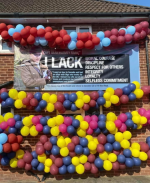What do you envision a PRes ESR doing? There already is a PRes construction engineering unit primarily in Nova Scotia. It’s RCAF, but I don’t know that the region can support two such units on top of each other (especially considering how nearly impossible it is to train PRes construction tradespersons). Maybe the squadron in Fredericton could take-over an EROC suite, but the vehicle maintenance would still fall back to being a 4 ESR problem.
I'll try to contain my disappointment with this question, but let me just throw this out there.
The US Army National Guard has 9 ARNG Engineer Brigades with roughly two battalions apiece across the country while the US Army Reserve has two Engineer Theatre Commands with a total of four engineer brigades which themselves have a total of 18 Engineer battalions. My guess is that they can find something for them to do.
But lets just get real. In times of national disasters engineer battalions, especially heavy equipment ones are invaluable. On operations, even ones as small as Canada's has a use for theatre level (NCE, NSE level) engineering resources for camp construction, vertical and horizontal facilities construction and maintenance and thus leaving the combat engineers free to concentrate on direct manoeuvre unit/formation support.
Can the region support two such units - sure it can. They can share equipment for training and if required on operations, domestic or expeditionary can rent equipment. Sure 4 ESR would look after the military equipment since we're too damn cheap to buy more or to set up a proper equipment maintenance strategy for the ResF.
Training - nothing simpler - use community colleges trade courses for plumbers, carpenters, electricians and heavy equipment operators, etc. You can pay their tuition and get an obligatory service commitment. Then run a small conversion course onto military equipment.
Let me put it this way; support engineers are probably the easiest to train if one puts ones mind to it and will be a highly valuable asset.
Regretfully, people seem to see difficulties where there aren't any and don't bother to look for the solutions or the benefits. The Canadian Army continues to be an institution that thinks small and plans for very little when it comes to how to expand the force beyond its RegF footprint.
Let's be honest. The Canadian Army's basic structure and methodology was set in the 1950s with its Korea and NATO expansion and a flip to the RegF forces-in-being concept. Ever since then the Army's primary objective has been to retain as much of that RegF structure as budgets allow. Even while its numbers have dropped dramatically, its only gone down from four brigades to three plus a significant special forces element and a plethora of headquarters. The point here is that the Army is trying to hold on to the past so much by fine tuning that it has not made much effort in trying to redefine itself in a meaningful way for the future. The greatest sign of that is that while clinging to every PY it has gone cheap on equipment, dropping critical capabilities and leaving its ResF component unequipped and undertrained.
Creating a ResF ESR in the Maritimes is basically a no-brainer. Yes, there are challenges but they are far from insurmountable and the result would pay dividends.




